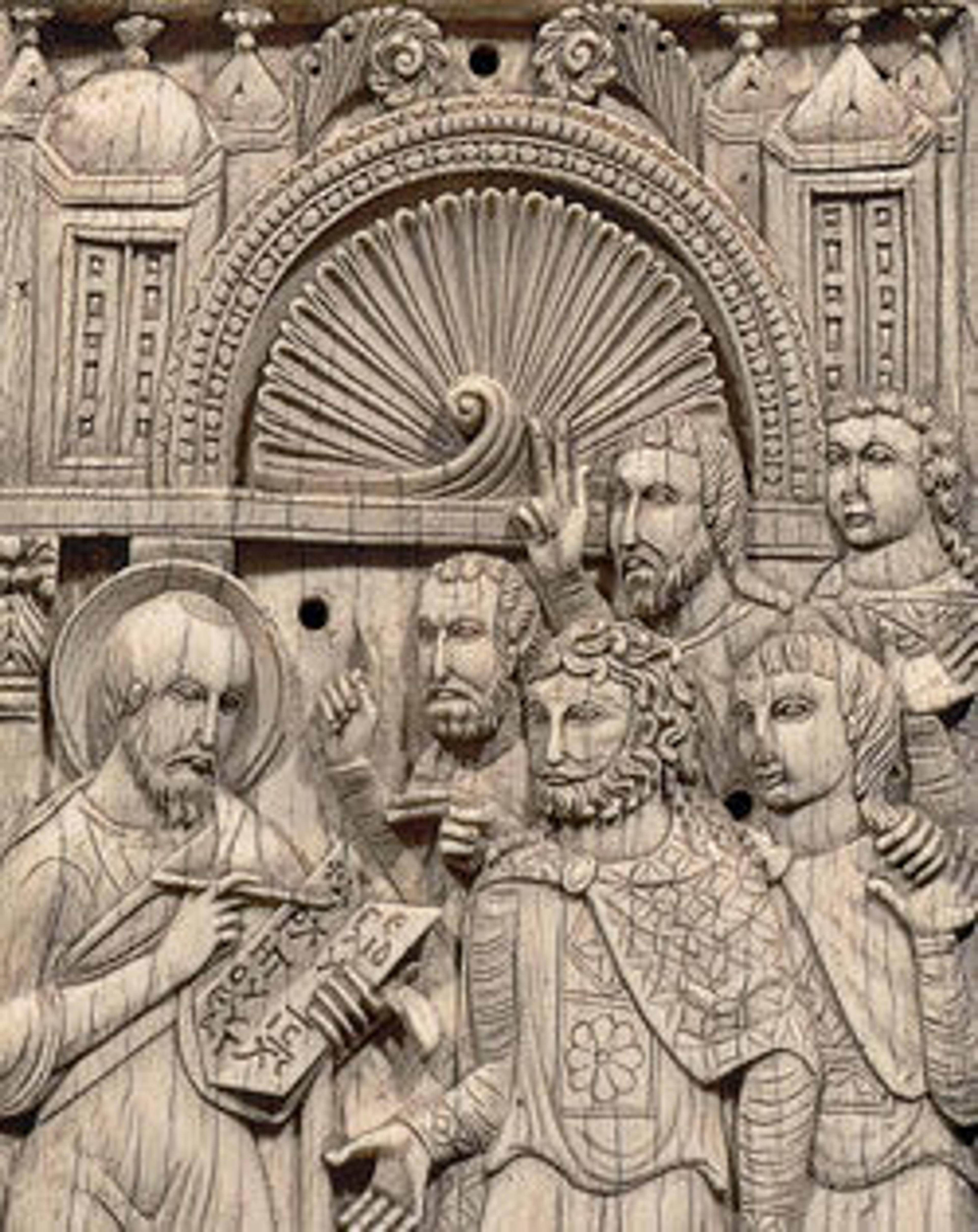The Attarouthi Treasure - Censer
With Saint John the Forerunner, a youthful saint, a deacon saint with a censer (probably Saint Stephen), a saint in orant pose, and crosses
Inscribed in Greek: For the salvation of Kerykos, son of Michaelios, and Martyrios, genuine brothers
These censers retain their original copper liners, which held hot coals and incense. Deacons swung the censers, releasing the perfume of the incense to honor the Gospel, the altar, and the objects used in the Eucharist.
Inscribed in Greek: For the salvation of Kerykos, son of Michaelios, and Martyrios, genuine brothers
These censers retain their original copper liners, which held hot coals and incense. Deacons swung the censers, releasing the perfume of the incense to honor the Gospel, the altar, and the objects used in the Eucharist.
Artwork Details
- Title:The Attarouthi Treasure - Censer
- Date:500–650
- Geography:Made in Attarouthi, Syria
- Culture:Byzantine
- Medium:Silver and gilded silver with copper liner
- Dimensions:Overall (without chain): 3 x 5 3/16 in. (7.6 x 13.1 cm)
Overall (hanging with chain): 15 3/4 x 5 3/16 in. (40 x 13.1 cm)
Diam. of foot: 2 3/16 in. (5.6 cm); 398.2g - Classification:Metalwork-Steel
- Credit Line:Purchase, Rogers Fund and Henry J. and Drue E. Heinz Foundation, Norbert Schimmel, and Lila Acheson Wallace Gifts, 1986
- Object Number:1986.3.13
- Curatorial Department: Medieval Art and The Cloisters
More Artwork
Research Resources
The Met provides unparalleled resources for research and welcomes an international community of students and scholars. The Met's Open Access API is where creators and researchers can connect to the The Met collection. Open Access data and public domain images are available for unrestricted commercial and noncommercial use without permission or fee.
To request images under copyright and other restrictions, please use this Image Request form.
Feedback
We continue to research and examine historical and cultural context for objects in The Met collection. If you have comments or questions about this object record, please contact us using the form below. The Museum looks forward to receiving your comments.
